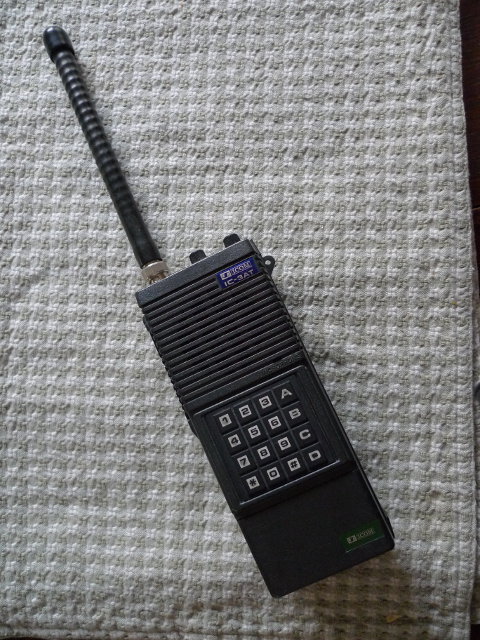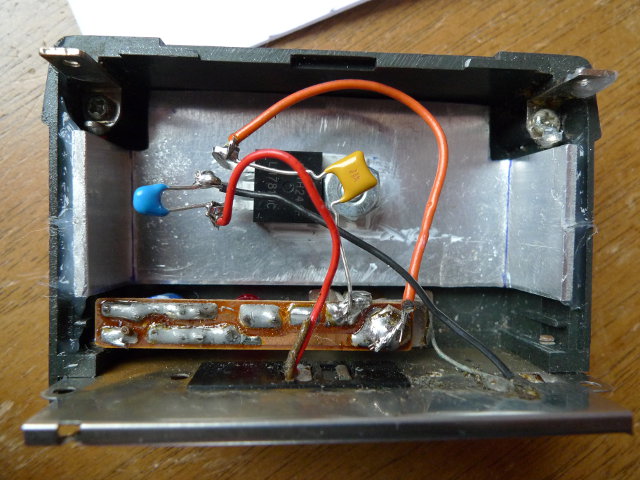220 MHz Adventures
Published at 16:46 on 4 February 2018

There’s a ham band at 220 MHz, but in most places its uses are limited to obscure control links, even though the band has frequencies allocated for repeater and simplex use. It was actually used where I lived as a teen and young adult in northern New Mexico (there was a very nice wide-area-coverage repeater with autopatch on that band). That was long enough ago that autopatch was still quite the thing (cell phones existed, but were very expensive, and most of New Mexico was outside of cell coverage). So I naturally grabbed a used 220 rig when I saw one for sale at a hamfest.
Sadly, I then proceeded to destroy said rig by hooking it up incorrectly to a power supply within a year of purchasing it. Then I left New Mexico to move out on my own and didn’t much think of getting anything to replace it for a while; I was living in a dorm room and it was tricky enough to put just one VHF antenna up for the 2 meter band.
I assumed when I moved to Seattle that given how as sparsely-populated a place as rural New Mexico had a useful (and used) 220 repeater, there would definitely be activity on that band in Seattle as well. So when I upgraded my mobile rig, I got a 2m/220 dual-bander, and also proceeded to snag an inexpensive older 220 HT at a hamfest when I saw one in good shape being offered for a good price.
Incorrect assumption; while there were repeaters on the 220 band up this way, they were virtually never used. All the local activity was on 2 meters and 70 centimeters. The old HT couldn’t do CTCSS tones, either, which at that time were increasingly needed to access repeaters, so it quickly found itself relegated to my spare parts box. The mobile rig just got used on 2 meters.
When I moved to Bainbridge Island, I learned that there were no 2m repeaters on the island, because by the time the island’s ham radio club had thought to erect a repeater of its own, all the local 2m frequency pairs had been allocated. So they put a repeater up on 70cm instead. That prompted me to sell the old mobile rig and upgrade to a new 2m/70cm dual-bander.
Last month, I started hearing about there being increasing activity (actual QSOs, not just control links) on 220 locally. There was even a weekly net that some people started talking about. For a moment I cursed my decision to sell the mobile rig then I remembered that old (by now about 35 years old) HT which by then had been sitting completely unused for well over 20 years. Would it even still work? It took some rummaging through my collection of old spare parts to assemble it: the battery packs were in one box, the antenna was in another, and the body of the radio was in a third.
I sprang for 6 new alkaline AA cells at the hardware store (not worth throwing money at expensive rechargeables for a radio that’s probably dead), plopped them in the battery holder, and put the holder on the radio. It sprang to life as a working receiver! But I couldn’t use it on any repeaters, because the radio can’t generate CTCSS tones and all repeaters are on tone squelch these days.
I arrange a simplex test with one of my ham radio friends in Seattle one weekend. Darned if I didn’t get an excellent signal report; it transmits just fine, too! So I purchase a third-party CTCSS board and install it. The latter required adjusting signal levels on a service monitor at another ham’s house, which also showed that the overall signal coming out of the radio was nice and clean.

Next came a base station setup: a simple ground-plane antenna built around a coax connector, followed by my taking apart one of the long-dead NiCd rechargeable battery packs for the thing and turning it into a battery eliminator by installing a simple voltage regulator (an LM7810 and two capacitors) inside its case.
It’s a low-powered base station; the HT comes from the days when the “high power” setting was only 1.5 to 2 Watts. Not that it matters; when doing some tests on the repeater of greatest interest, I dropped my power to the 0.5 Watt low setting and continued getting the same full-quieting signal reports. So on low it will tend to stay.
